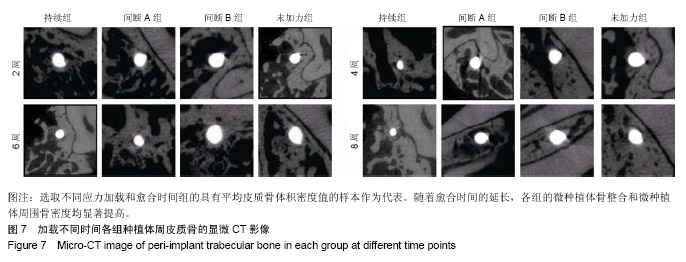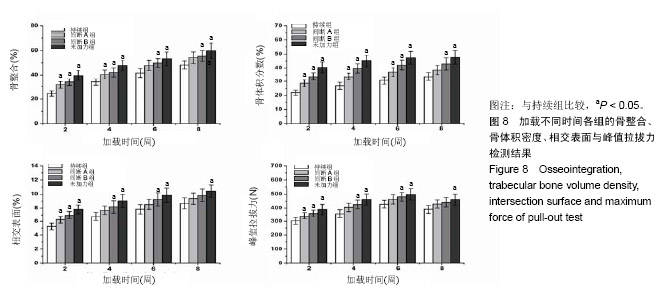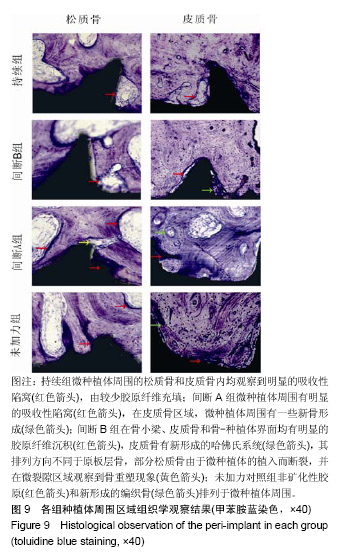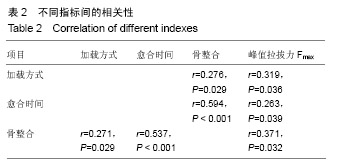| [1]Branemark PI,Aspegren K,Breine U.Microcirculatory studies in man by high resolution vital microscopy. Angiology. 1964;15: 329-332.[2]Buser D,Mericske-Stern R,Bernard JP,et al. Long-term evaluation of nonsubmerged ITI implants. Part 1: 8-year life table analysis of a prospective multicenter study with 2359 implants. Clin Oral Implants Res.1997;8:161-172. [3]Albrektsson T,Dahl E,Enbom L,et al.Osseointegrated oral implants. A Swedish multicenter study of 8139 consecutively inserted Nobel pharma implants.J Periodontol.1988;59:287-296. [4]van Roekel NB.The use of Branemark system implants for orthodontics anchorages: report of a case. Int J Oral Maxillofac Implants.1989;4:341-344. [5]Deguchi T,Takano-Yamamoto T,Kanomi R,et al.The use of small titanium screws for orthodontic anchorage.J Dent Res 2003;82: 377-381. [6]Miyawaki S,Koyama I,Inoue M,et al.Factors associated with the stability of titanium screws placed in the posterior region for orthodontic anchorage.Am J Orthod Dentofacial Orthop. 2003; 124:373-378. [7]Papageorgiou SN,Zogakis IP,Papadopoulosc MA.Failure rates and associated risk factors of orthodontic miniscrew implants: a meta-analysis.Am J Orthod Dentofacial Orthop. 2012;142: 577-595. [8]Szmukler-Moncler S,Salama H,Reingewirtz Y,et al.Timing of loading and effect of micromotion on bone-dental implant interface: review of experimental literature.J Biomed Mater Res.1998;43:192-203. [9]Isaacson JR,Ingram AH.Forces produced by rapid maxillary expansion. II. Forces present during treatment.Angle Orthod. 1964;34:261-269. [10]Krishnana V,Davidovitchb Z.Cellular, molecular, and tissue-level reactions to orthodontic force. Am J Orthod Dentofacial Orthop. 2006;129:469.e1-469.e32. [11]Southard KA,Forbes DP.The effects of force magnitude on a sutural model: a quantitative approach. Am J Orthod Dentofacial Orthop. 1988;93:460-466. [12]Deguchi T,Murakami T,Kuroda S,et al.Comparison of the intrusion effects on the maxillary incisors between implant anchorage and J-hook headgear.Am J Orthod Dentofacial Orthop.2008;133:654-660. [13]Liu SS,Kyung HM,Buschang PH.Continuous forces are more effective than intermittent forces in expanding sutures.Eur J Orthod.2010;32:371-380. [14]Saxon LK, Robling AG, Alam I, et al. Mechanosensitivity of the rat skeleton decreases after a long period of loading, but is improved with time off. Bone. 2005; 36: 454-464. [15]Robling AG,Burr DB,Turner CH.Recovery periods restore mechanosensitivity to dynamically loaded bone. J Exp Biol. 2001;204(Pt 19):3389-3399.[16]Kumasako-Haga T,Konoo T,Yamaguchi K,et al.Effect of 8-hour intermittent orthodontic force on osteoclasts and root resorption. Am J Orthod Dentofacial Orthop. 2009;135:278. e1-278.e8.[17]Aras B,Cheng LL,Turk T,et al.Physical properties of root cementum: part 23. Effects of 2 or 3 weekly reactivated continuous or intermittent orthodontic forces on root resorption and tooth movement: a microcomputed tomography study.Am J Orthod Dentofacial Orthop.2012;141:e29-e37. [18]Ballard DJ,Jones AS,Petocz P,et al.Physical properties of root cementum: part 11. Continuous vs intermittent controlled orthodontic forces on root resorption. A microcomputed- tomography study. Am J Orthod Dentofacial Orthop. 2009; 136(1):8.e1-8.e8. [19]Zhao L,Xu Z,Yang Z,et al. Quantitative research using computed tomographic scanning of beagle jaws for determination of safe zones for micro-screw implantation.Ann Anat.2009;191(4):379-388.[20]Xu Z,Wu,Zhao L,et al.Effect of placement angle on the stability of loaded titanium microscrews in beagle jaws.Angle Orthod. 2013;83:659-666. [21]Gabet Y,Muller R,Regev E,et al.Osteogenic growth peptide modulates fracture callus structural and mechanical properties. Bone.2004;35:65-73. [22]Miura F,Mogi M,Ohura Y, et al.The super-elastic Japanese NiTi alloy wire for use in orthodontics. Part III. Studies on the Japanese NiTi alloy coil springs.Am J Orthod Dentofacial Orthop.1988;94: 89-96. [23]von Fraunhofer JA,Bonds PW,Johnson BE.Force generation by orthodontic coils prings. Angle Orthod 1993;63(2):145-148. [24]Creekmore TD,Eklund MK.The possibility of skeletal anchorage. J Clin Orthod.1983;17:266-269. [25]Kyung HM,Park HS,Bae SM, et al.Development of orthodontic micro-implants for intraoral anchorage.J Clin Orthod. 2003; 37:321-328.[26]Zhao L,Xu Z,Yang Z,et al.Orthodontic mini-implant stability in different healing times before loading: a microscopic computerized tomographic and biomechanical analysis. Oral Surg Oral Med Oral Pathol Oral Radiol Endod. 2009; 108(2): 196-202. [27]Soncini M,Rodriguezy Baena R,et al.Experimental procedure for the evaluation of the mechanical properties of the bone surrounding dental implants.Biomaterials.2002;23(1):9-17. [28]Melsen B,Costa A.Immediate loading of implants used for orthodontic anchorage. Clin Orthod Res. 2000;3(1):23-28. [29]Kim SH, Choi BH, Li JX,et al. Peri-implant bone reactions at delayed and immediately loaded implants: an experimental study.Oral Surg Oral Med Oral Pathol Oral Radiol Endod. 2008;105:144-148. [30]Schatzker J,Horne JG,Sumner-Smith G.The effect of movement on the holding power of screws in bone. Clin Orthop. 1975;(111):257-262. [31]Turner CH.Three rules for bone adaptation to mechanical stimuli.Bone. 1998;23:399-407. [32]Robling AG,Burr DB,Turner CH.Partitioning a daily mechanical stimulus into discrete loading bouts improves the osteogenic response to loading.J Bone Miner Res.2000;15(8):1596-1602. [33]Srinivasan S,Agans SC,King KA,et al. Enabling bone formation in the aged skeleton via rest-inserted mechanical loading.Bone. 2003;33(6):946-955. |










.jpg)
